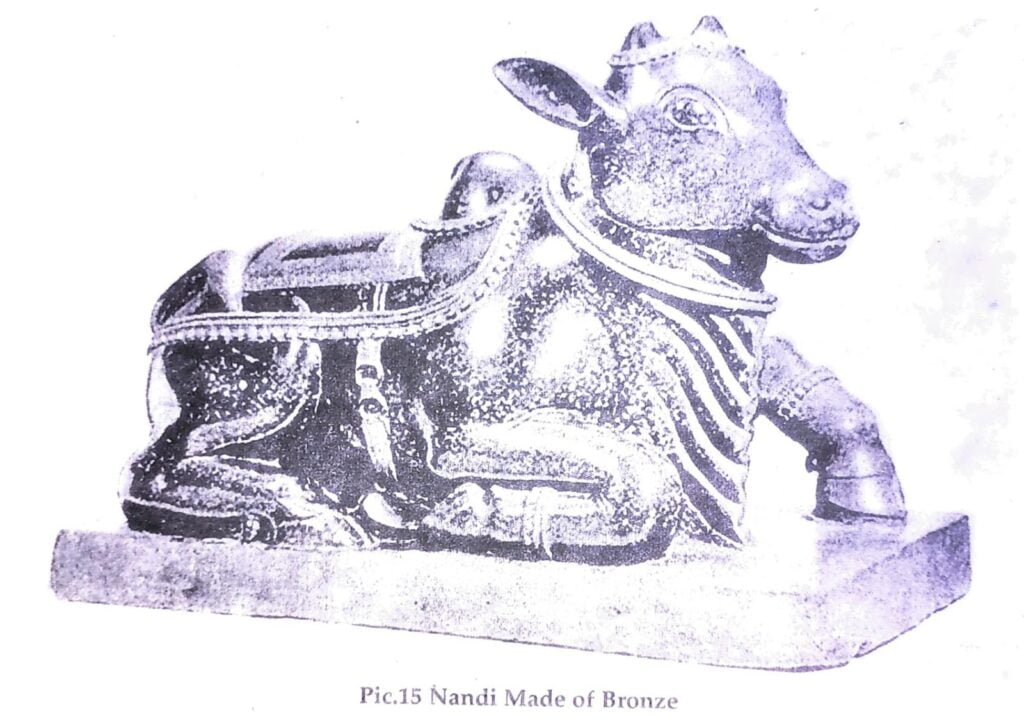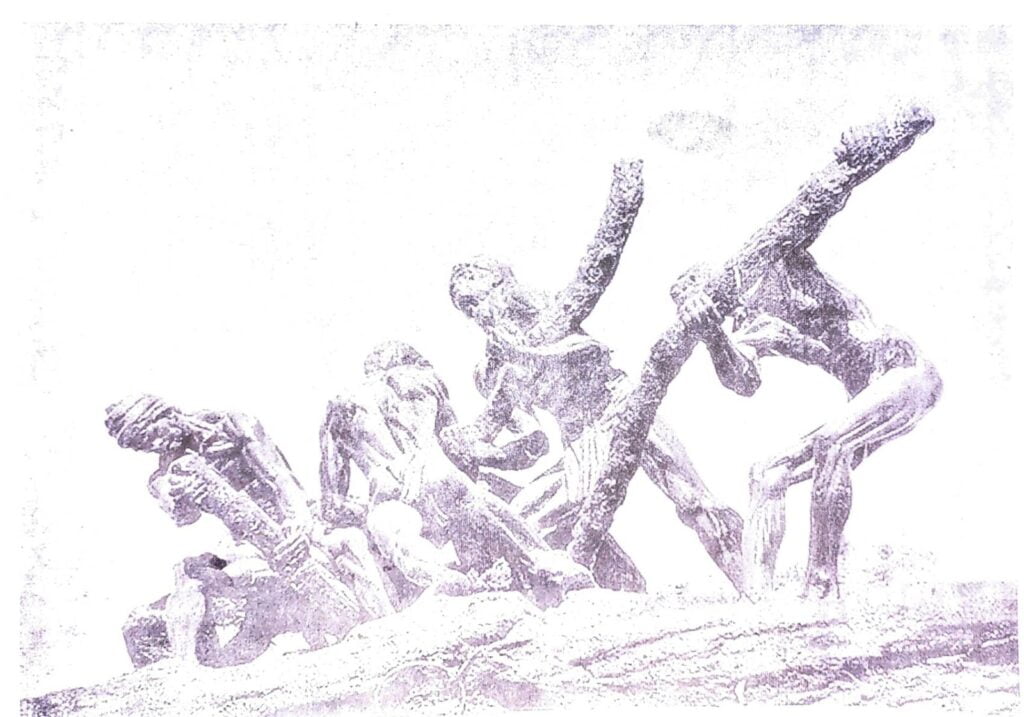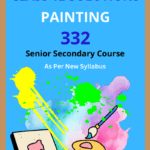NIOS Class 12 Painting Chapter 5 Indian Bronze Sculptures Solutions to each chapter is provided in the list so that you can easily browse throughout different chapters NIOS Class 12 Painting Chapter 5 Indian Bronze Sculptures and select need one. NIOS Class 12 Painting Chapter 5 Indian Bronze Sculptures Question Answers Download PDF. NIOS Study Material of Class 12 Painting Notes Paper 332.
NIOS Class 12 Painting Chapter 5 Indian Bronze Sculptures
Also, you can read the NIOS book online in these sections Solutions by Expert Teachers as per National Institute of Open Schooling (NIOS) Book guidelines. These solutions are part of NIOS All Subject Solutions. Here we have given NIOS Class 12 Painting Chapter 5 Indian Bronze Sculptures, NIOS Senior Secondary Course Painting Solutions for All Chapter, You can practice these here.
Indian Bronze Sculptures
Chapter: 5
PAINTING
Some of the characteristics of Bronzes sculptures that are found commonly, can be marked on the basis of geographical division, such as:
Western Indian Bronze: The metal sculpture flourished in this region of Gujarat and Rajasthan from the 6th-12th century.
Most of the Bronze sculptures from this side are associated with Jainism, including the savior figures of Mahavira and many ritual objects such as incense burners and lamp bearers.
Made with using lost-wax casting method, the eyes and ornaments of the statue were frequently inlaid with silver and gold metal, to add look in it.
Eastern Indian Bronze: The metal sculpture flourished in the states of modern Bihar and West Bengal from the 9th century.
Most of these metal sculptures were made from alloys of the eight metals; the bronze sculptures were produced by lost-wax casting only. These mainly represent various divinities such as Shiva, Vishnu. Most of the sculptures were produced in the great Buddhist monasteries and distributed throughout South Asia, from this region.
South Indian Bronze: The metal sculpture flourished in the districts of Thanjavur and Tiruchchirappalli in Tamil Nadu from the 8th- 16th century. These artworks in Bronze were ranging from small household images to almost life-size sculptures intended to be carried in temple. These included the figures of Hindu divinities, especially in the various iconographic forms of the god Shiva and Lord Vishnu.
Bronze is of exceptional historical interest and still used widely for various applications. It was prepared before 3000 BC, for making statues, coins and other decorative articles.
Later, the bronze sculpture continued through the 10th and 11th centuries in many countries including India. The art of making Bronze sculptures began in the Indus Valley Civilization (2400-B.C.), where the Indus Bronze statuette of a slender-limbed “dancing girl” was found in Mohanjodaro. The stone sculptures and the their inner sanctum images in the temple remained on a fixed place, until the 10th century, where the newly emerged religious concepts. demanded that the deities should appear in a variety of public roles. As a consequence, large bronze images were created as these images could be carried outside the temple places. Then from the 9th to the 13th centuries in the Chola period, the art activities were carried out in enormous quantity, where new temples to show the architectural skills were built, old ones renovated with additional beauty and grand festivals were organized. The Chola-period bronzes have their figures depicting sensuous and detailed clothing and jewellery. The art works of this period are famous for their subtle modeling and clear outline marked on the form, as well as for maintaining a ideal balance of graceful realism and heroic classicism. During Chola-period, Bronzes made images were created with using the Lost wax technique.


From this period only, many fine figures made from Bronze, an alloy of copper are famous – it contains Shiva in various forms, such as Vishnu and his consort Lakshmi, and the Shiva saints. The sculptors in the 11th and the 12th centuries worked in real sense to achieve classic quality. The best example of this is the form of Nataraja, the Lord of the dance is a creation of this period.
Unique Bronze sculptures were originally produced to achieve a spiritual experience, but they are conveying a deeper meaning beyond the physical sculpture itself. Any goddess that was presented in Bronze sculpture signified the belief of people that was resulted from a cultural set up of the society. For example: Indian Bronze figure of Kali represents the embodiment of the force of destruction. But the Goddess Kali also has a manifestation or another form of Devi as a consort of Shiva, known as Parvati. So, Bronze sculptures showing Shiva and Parvati together are found but with it two forms of Kali are also sculptured in a single sculpture gives the idea of cultural context of presenting gods in India.
In carving various images the sculptors concentrated more on its aesthetic impact, than creating sculptures of skillful presentation. Even the Indus valley sculptures gain significant attention when aesthetic values are concerned.
From many sculptures that are discovered from this place, the most remarkable is the statue of the dancing girl in Bronze, since it illustrates the details that were achieved. through it, when considered as a whole. She is shown as nude with erect posture placing her right hand on her hip and both her legs are bent at the knee point as if she is dancing. A trefoil necklace and the bangles worn in her left arm are carved beautifully. Available to us from centuries, the Bronze temple images seem to have been cast specially for eternity.
And these Bronze sculptures are an important and worthy representation of the Asian sacred culture, showing its glorious past.

Pic. 16 Triumph of Labour
Intext Questions 5.1
Select the correct answer:
1. The statue of Natraj was built in
(a) 18th century.
(b) 11th century.
(c) 15th century.
Ans: (b) 11th century.
2. The statue of Natraj is found in
(a) Tanjore, Tamil Nadu.
(b) Ajanta, Maharashtra.
(c) Elephanta, Maharashtra.
Ans: (b) Ajanta, Maharashtra.
3. Natraj statue is made up of
(a) Bronze.
(b) Mud.
(c) Wax.
Ans: (a) Bronze.
Intext Questions 5.2
Select the correct answer:
1. Who built bronze statue with ‘Lost wax’ technique
(a) Tribal artists of Maharashtra.
(b) Tribal artists of Uttar pradesh.
(c) Tribal artists of Madhya Pradesh.
Ans: (c) Tribal artists of Madhya Pradesh.
2. Dora Bronze painting was made by
(a) Tribals.
(b) Santhali.
(c) Munda.
Ans: (a) Tribals.
3. This technique was used by
(a) Artists of China, Greece and Mesopotamia.
(b) Artists of Iran, Sudan and Greece artists.
(c) Artists of Europe.
Ans: (a) Artists of China, Greece and Mesopotamia.
4. The painting ‘Triumph of Labour’ was made by
(a) Devi Prasad Roy Choudhary.
(b) Mukut Prasad Roy Choudhary.
(c) None of the above.
Ans: (a) Devi Prasad Roy Choudhary.
5. The painting Triumph of Labour’ was built in
(a) 1945
(b) 1954
(c) 1953
Ans: (b) 1954
6. This painting is preserved at
(a) National modern art museum, New Delhi
(b) National museum, Mumbai
(c) National museum, Patna
Ans: a. National modern art museum, New Delhi.
Intext Questions 5.3
Fill in the blanks:
1. The Natraj statue kept at national museum was built from __________.
Ans: Bronze.
2. There are __________ in one hand of the statue and __________ the other hand.
Ans: Drum, Ring of the.
3. This statue of 12th century vs built under __________ region.
Ans: Chola.
Intext Questions 5.4
Fill in the blanks:
1. D.P. Roy Choudhary was __________ as well as __________.
Ans: Singer, writer.
2. In the early life D.P. Roy Choudhary received training of art under.
Ans: Hiranmay Roy Choudhary.
3. The Triumph of Labour’ statue symbolizes __________.
Ans: Freedom struggle.
Intext Questions 5.5
Find whether the following statements are true or false.
1. Do Qura Bronze structure was made by ‘Lost wax technique’.
Ans: True.
2. This technique is very old.
Ans: True.
3. This is first made of plaster.
Ans: False.
Short Type Questions Answer
1. Write the characteristics of Natraj statue.
Ans: Natraja is a depiction of the Hindu god Shiva as the cosmic dancer who performs his divine dance to destroy a weary universe and make preparations for god Brahma to start the process of creation. Nataraja is most often depicted through a statue. The dance of Shiva in Tillai, the traditional name for Chidambaram, forms the motif for all the depictions of Shiva as Nataraja. He is also known as “Sabesan” which splits as “Sabayil aadum eesan” in Tamil which means “The Lord who dances on the dais”. The form is present in most Shiva temples in South India; and is the main deity in the famous temple at Chidambaram.
The sculpture is usually made in bronze, with Shiva dancing in an aureole of flames, lifting his left leg (and in rare cases, the right leg) and balancing over a demon or dwarf (Apasmara) who symbolizes ignorance. It is a well known sculptural symbol in India and popularly used as a symbol of Indian culture. Nataraja, Lord Shiva as the Cosmic Dancer representing the rhythmic movement of the entire cosmos.A cobra uncoils from his lower right forearm, and the crescent moon and a skull are on his crest. He dances within an arch of flames. This dance is called the Dance of Bliss, ananda tandava.
The upper right hand holds a small drum shaped like an hourglass that is called a Damaru in Sanskrit. A specific hand gesture (mudra) called Damaru-hasta (Sanskrit for “Damaru- hand”) is used to hold the drum. It symbolizes sound originating creation.
The upper left hand contains Agni or fire, which signifies destruction. The opposing concepts in the upper hands show the counterpoise of creation and destruction. The second right hand shows the Abhaya mudra (meaning fearlessness in Sanskrit), bestowing protection from both evil and ignorance to those who follow the righteousness of dharma. The second left hand points towards the raised foot which signifies upliftment and liberation.
2. Who made bronze statue?
Ans: The Cholas came to power in the late 9th century, and until the late 13th century, they ruled most of south India, Sri Lanka, the Maldive Islands, and even parts of the Indonesian island of Java from their homeland near Thanjavur (Tanjore) on the southeastern coast. They also maintained diplomatic ties with countries as distant as Burma (Myanmar), China, and Malaysia. Chola rulers were active patrons, and during their reign, poetry, drama, music, and dance flourished. They also constructed enormous stone temple complexes decorated inside and out with painted and sculpted representations of the Hindu gods. However, some of the best-known artistic remains from this time period are the bronzes that were commissioned for each temple. While the stone sculptures and the inner sanctum image empowering the temple remained immovable, changing religious concepts during the 10th century demanded that the deities take part in a variety of public roles similar to those of a human monarch. As a result, large bronze images were created to be carried outside the temple to participate in daily rituals, processions, and temple festivals.
The round holes found on the bases of many of these sculptures are for the poles that were used to carry the heavy images. Admired for the sensuous depiction of the figure and the detailed treatment of their clothing and jewelry, Chola-period bronzes were created using the lost wax technique. Although bronze casting has a long history in south India, a much larger and a much greater number of bronze sculptures were cast during the Chola period than before, further attesting to the importance of bronze sculpture during this period. It should be noted that when in worship, these images are covered in silk cloths, garlands, and jewels, and would not appear as they do outside a religious context. Decorating the bronzes in this way is a tradition at least a thousand years old as such decorations are referred to in 10th-century Chola inscriptions.
3. What does the painting ‘Triumph of Labour’ symbolize?
Ans: Triumph of Labour (bronze) depicts four laborers draped in tucked up loin cloth are involved in moving a heavy boulder. Their muscles glisten in sweat and physical exertion. The work is a metaphor for national will, in that the road of Independent India is a rough path and advance is an up-hill task. It may be achieved only through tremendous will power and with the strength of unity. An important monumental work by the renowned sculptor, D.P. Roy Chowdhury, is called the “Triumph of Labour’. The strong muscular bodies of the men hauling the work, their very animated postures make this an extremely expressive work. In fact it may be said that Mr. Roy Chowdhury belongs to the expressionistic.

Hi! my Name is Parimal Roy. I have completed my Bachelor’s degree in Philosophy (B.A.) from Silapathar General College. Currently, I am working as an HR Manager at Dev Library. It is a website that provides study materials for students from Class 3 to 12, including SCERT and NCERT notes. It also offers resources for BA, B.Com, B.Sc, and Computer Science, along with postgraduate notes. Besides study materials, the website has novels, eBooks, health and finance articles, biographies, quotes, and more.



